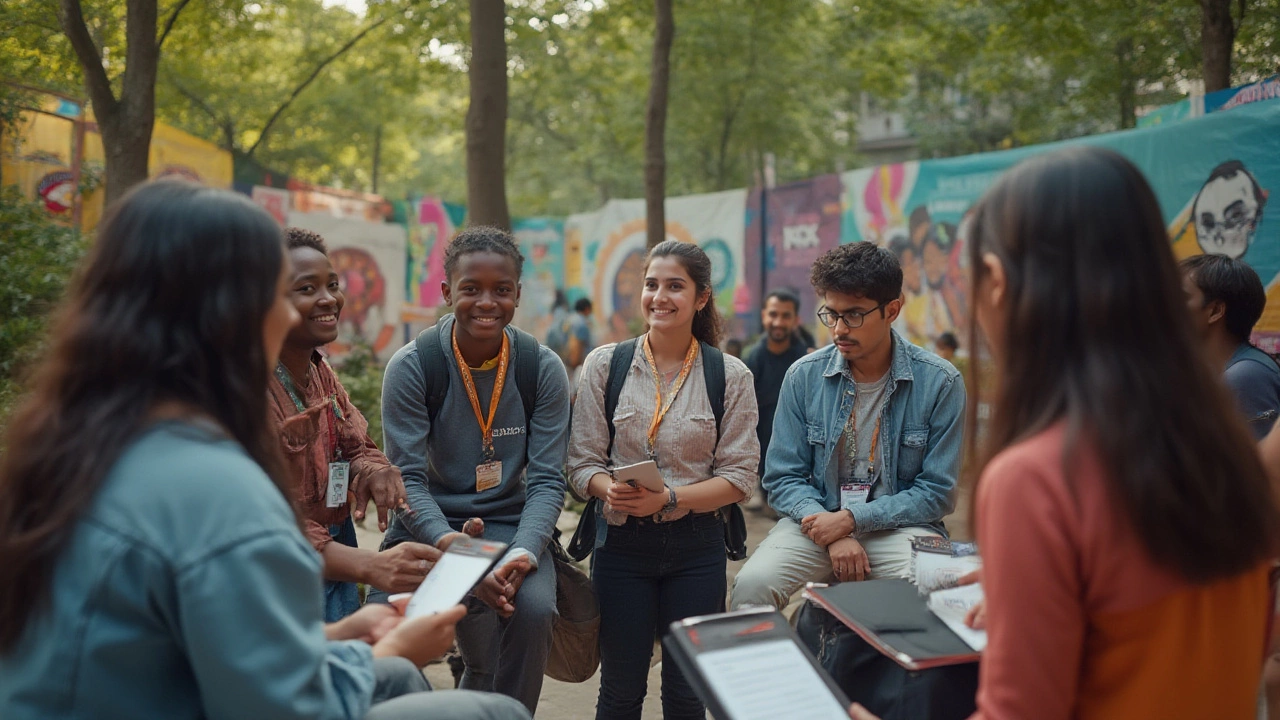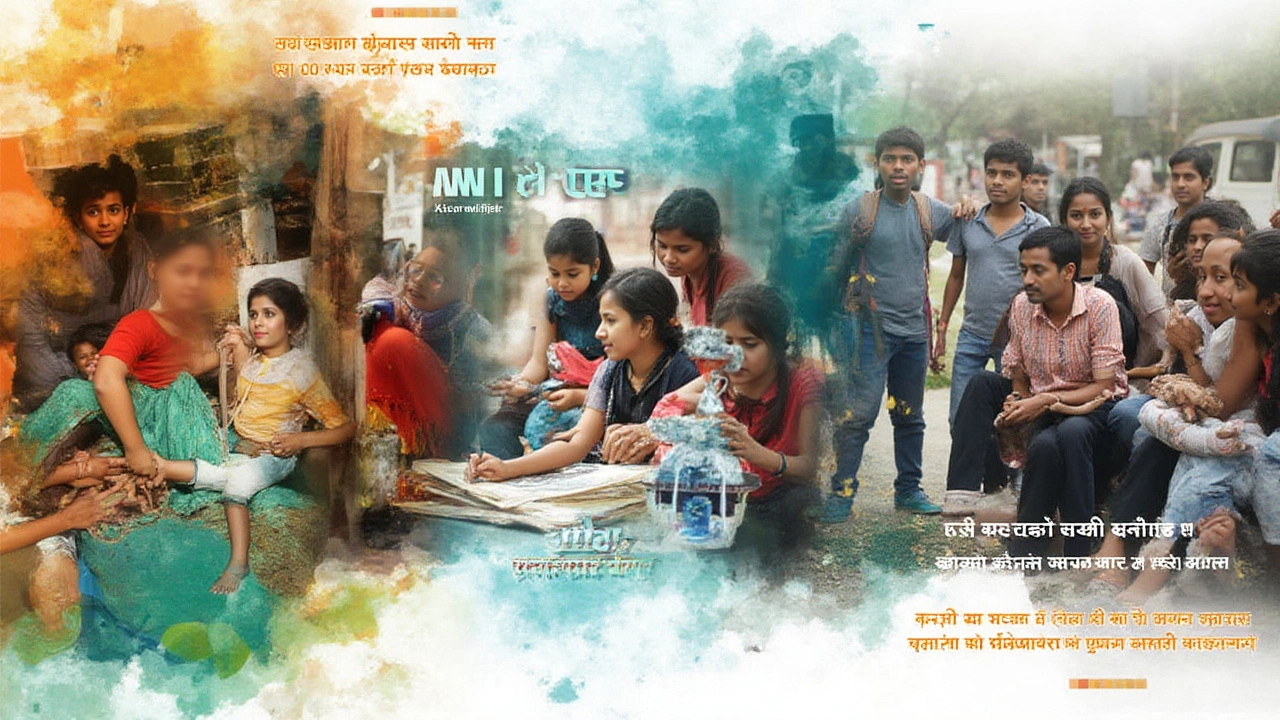Picture a world where young people don't just wait to grow up before making an impact. Imagine having a chance—right now—to learn what school can’t teach, discover who you are, and even make a real difference in your community or the world. That's the kind of space youth organisations are building every single day. If you think these places are only for the straight-A students or just another after-school hangout, you’re way off. These groups are buzzing with ideas, action, and sometimes, wild dreams that actually turn into real projects. The hidden side? The world's biggest changes often start with youth—think of the Fridays for Future movement, which started with one quiet student outside a Swedish parliament and spread to cities everywhere. Now, let’s pull back the curtain and see what these groups actually are, how they work, and why you might find yourself right at home in one.
Understanding Youth Organisations: What Makes Them Tick?
Youth organisations are simply groups created for, and often led by, young people. Their ages usually range from about 12 to 30, but that can stretch or shrink depending on the group’s goals and location. You might hear them called youth groups, clubs, or associations—the names vary, but the core idea stays the same: young people coming together to learn, lead, and take action. Some of these groups are independent and set their own rules; others connect with bigger international networks, like the Red Cross Youth, Scouts, Rotaract, or YMCA. You’ll also find local groups focusing on unique cultural, social, or environmental issues, each shaped by the energy and vision of its members.
What sets youth organisations apart is their approach. Unlike school, where adults set the agenda, here the ideas often bubble up from the members. If you’ve ever wished you could decide what to do with your free time, or which causes really need attention, you'd probably feel right at home. These groups can focus on anything—sports, arts, technology, human rights, the environment, or politics. Some are all about building practical skills, like public speaking or financial know-how, while others get hands-on with volunteering, activism, or even running social businesses.
Did you know, for example, that the World Organization of the Scout Movement counts over 57 million members worldwide (as of early 2025)? Or that AIESEC, a youth-run organisation focused on leadership and global exchange, has roots in over 120 countries? The scale of some of these networks is massive, but so is the impact. Groups like Amnesty International's youth chapters or local environmental clubs often lead campaigns that force adults to rethink old policies.
Formal youth councils even get to advise mayors, governments, or the United Nations. According to the 2024 UN Youth Report, nearly 80% of surveyed youth organisations said they've contributed to policy discussions or local decision-making in the past two years. That's not just talking—sometimes it's about rewriting rules or launching services that didn’t exist before. Here's a look at some quick numbers:
| Organisation | Year Founded | Active Members (2025) | Main Focus |
|---|---|---|---|
| World Organization of the Scout Movement | 1920 | 57 million+ | Leadership & Outdoor Skills |
| Rotaract | 1968 | 250,000+ | Community Service & Professional Development |
| AIESEC | 1948 | 40,000+ | Leadership & Cultural Exchange |
| YMCA Youth Programs | 1844 | 15 million+ | Youth Empowerment & Sports |
If you peek into the history of youth organisations, you’ll spot sparks of revolution—like how youth clubs helped drive civil rights, climate action, and women's rights across the globe. Even the rise of digital activism owes plenty to tech-savvy youth groups who knew how to get voices heard on social media. But it’s not all headlines and hashtags; it often starts quietly, with someone saying “Why don’t we try this?”

Why Youth Organisations Matter: Life Lessons, Friends, and Change-Making
Joining a youth organisation isn’t just about padding your CV (although let’s be honest, that does help). It’s about jumping headfirst into experiences you can’t get anywhere else—not just theory, but messy, real-life trial and error. So, what exactly do you get out of it?
First off, let’s talk about skills. Forget the idea that leadership is just for the naturally confident or teachers’ pets. Youth organisations are where first-timers get their hands dirty planning projects, pitching ideas, and sometimes even dealing with epic fails—yes, those are pretty instructive, too. You get to learn teamwork on the fly, manage real budgets, and run events, from mini hackathons to beach clean-ups. If public speaking gives you anxiety, leading a meeting or convincing city officials to listen is another level—but these are safe spaces for mistakes. Most members say the scariest moments gave them exactly the confidence boost school never did.
The friends you make often become a mini-family. It might sound cheesy, but there’s something about struggling through midnight event deadlines, summer camps, or awkward icebreakers that pulls people together. Surveys from Girlguiding UK in 2023 showed that over 66% of girls joined to meet new people outside of their usual circles, and 59% stayed because they found a sense of belonging. Even the digital-first Gen Z crowd loves these connections—Discord servers, group chats, and collabs between cities or even countries are now standard.
The youth organisations that stick around aren't just social clubs. Studies by the European Youth Forum in 2024 backed up what members already know: teens and 20-somethings who play an active role in youth groups often show better problem-solving and mental health than their non-member peers. Why? They have a purpose, a support crew, and a chance to see their own impact, which helps build resilience even when plans flop or the world feels off-balance.
But let’s get real: not all youth organisations are perfect. Some can feel cliquey or slow to adapt, and sometimes getting actual authority means pushing the adults to let go of the reins. Look for places where members genuinely set the agenda and try new things. The best-run groups don’t just want numbers, they want members to shape the future (and occasionally, they let you break the rules).
Got big dreams of changing the world—or just want to fix one problem in your town? Youth organisations give you practical tools: how to start petitions, use social media for more than just memes, run peaceful protests, write grant applications, or pitch journalists. Don’t forget volunteering: hands-on work might mean teaching younger kids, launching an art exhibition, or building a community garden. Each success is a win, but the true payoff comes from learning to get up after failures and try again, ideally with your group by your side.
Being a member can open doors. Scholarships, training, and global travel aren’t reserved for the lucky few. AIESEC, for instance, offers hundreds of international internships every year with real businesses and non-profits. Scouts compete for global jamboree spots. Some youth groups help members get early access to conferences, UN events, or leadership summits—putting you in the same room as changemakers you look up to on TikTok or Instagram.
One tip if you’re searching for your place: try out more than one group. Start with a cause that fires you up, or ask friends for their picks. Many groups let you test the waters before signing up for big commitments. Check social media for behind-the-scenes vibes—does the group actually care about youth voices, or is it just recycling the same old ideas? The right group should feel energizing, not exhausting or judgey. And if you can’t find the group you want, there are tools now—like YouthHub or Meetup—to launch your own. Yes, even if you’re “not the leader type,” which, as plenty of founders will tell you, usually just means you haven’t tried it yet.

How to Find the Right Youth Organisation: Steps, Tips, and Real Stories
Okay, you’re interested. But with thousands of options, how do you pick? Start with your passion. Do you want to try new sports? Debate global issues? Protect local wildlife? Or maybe combine a few interests—there’s a group for nearly every mashup, from coding-for-charity meetups to skateboarding activism collectives. Universities and community centers often keep a list, and international orgs usually have “find a chapter” tools on their sites.
Here are a few steps to help you track down your perfect fit:
- Research the options: Search online for local and global chapters. Read real reviews—try Reddit or Discord servers where members share honest takes.
- Check the vibe: Look for groups that welcome new voices. Are you allowed to suggest new projects? Do they have regular elections?
- Test-run an event: Visit a meeting or event as a guest. Notice the group dynamic—are people genuinely engaged, or are adults running the show?
- Ask about impact: Find out what the group has achieved recently. Have they finished real projects or is it mostly just talk?
- Look up the leaders: Do they support members’ ideas? Good leaders empower, not micromanage.
- Consider time and money: Most authentic youth groups should be affordable or even free. Some might require small dues, but beware of orgs that feel like a money-making machine.
- Safety first: Check for guidelines on inclusivity and mental health support. The most forward-thinking orgs are tackling these openly in 2025.
Let’s spotlight a couple of stories that bring this to life. Sofia, 16, joined a climate action club in Lisbon in 2023 feeling “awkward and clueless.” Within a year, she was leading a city-wide trash audit and helping other newbies—proof anyone can level up fast with the right support. Or there’s Vik, 22, who started a digital inclusion project for rural teens in Nepal through AIESEC, after being inspired by a mentor they met at a global youth summit. Now, a team runs coding workshops in three districts—impact that started with one casual meeting sign-up.
Stats from the International Youth Foundation found that 73% of members who joined an organisation in the last two years said their confidence went up, and 68% found at least one new mentor or teacher outside of school. And get this—nearly half of today’s youth parliamentarians in Europe got their start in a local youth council or volunteering club.
Don’t be afraid to try something new or step out of your comfort zone. Youth organisations aren’t just training grounds for leaders; they’re places where passions, quirks, and wild ideas get a shot. You’ll probably make mistakes, maybe argue with a teammate or two, but the growth—and occasional chaos—is what makes the experience unforgettable.
The next time someone says “young people don’t care” or “youth are glued to their screens,” you can point to the millions strong, active, and ambitious crowd behind youth organisations. Whether for fun, change-making, or the friends you never expected, these groups are changing what it means to grow up in 2025. Go find your tribe—you might just surprise yourself with what you can do.
